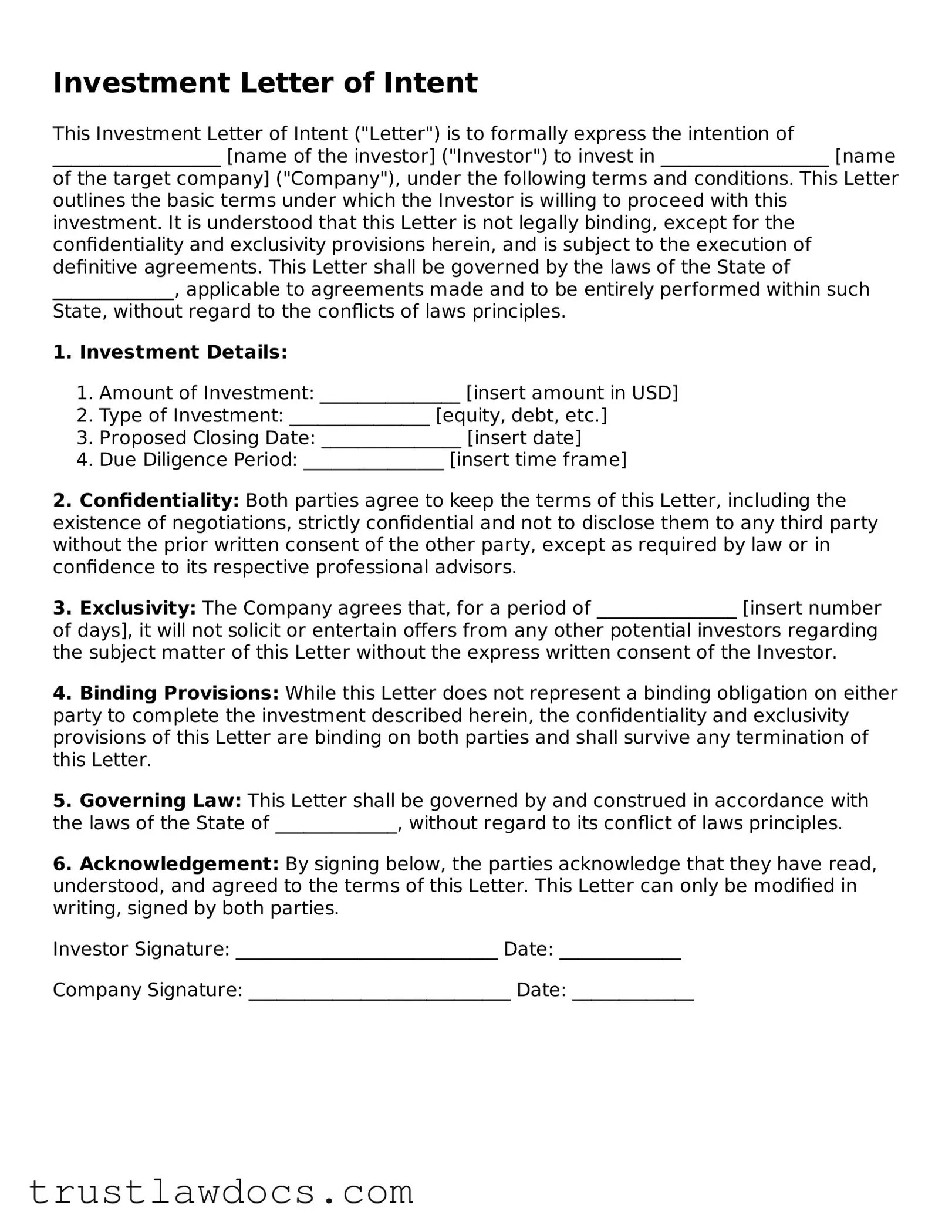Investment Letter of Intent
This Investment Letter of Intent ("Letter") is to formally express the intention of __________________ [name of the investor] ("Investor") to invest in __________________ [name of the target company] ("Company"), under the following terms and conditions. This Letter outlines the basic terms under which the Investor is willing to proceed with this investment. It is understood that this Letter is not legally binding, except for the confidentiality and exclusivity provisions herein, and is subject to the execution of definitive agreements. This Letter shall be governed by the laws of the State of _____________, applicable to agreements made and to be entirely performed within such State, without regard to the conflicts of laws principles.
1. Investment Details:
- Amount of Investment: _______________ [insert amount in USD]
- Type of Investment: _______________ [equity, debt, etc.]
- Proposed Closing Date: _______________ [insert date]
- Due Diligence Period: _______________ [insert time frame]
2. Confidentiality: Both parties agree to keep the terms of this Letter, including the existence of negotiations, strictly confidential and not to disclose them to any third party without the prior written consent of the other party, except as required by law or in confidence to its respective professional advisors.
3. Exclusivity: The Company agrees that, for a period of _______________ [insert number of days], it will not solicit or entertain offers from any other potential investors regarding the subject matter of this Letter without the express written consent of the Investor.
4. Binding Provisions: While this Letter does not represent a binding obligation on either party to complete the investment described herein, the confidentiality and exclusivity provisions of this Letter are binding on both parties and shall survive any termination of this Letter.
5. Governing Law: This Letter shall be governed by and construed in accordance with the laws of the State of _____________, without regard to its conflict of laws principles.
6. Acknowledgement: By signing below, the parties acknowledge that they have read, understood, and agreed to the terms of this Letter. This Letter can only be modified in writing, signed by both parties.
Investor Signature: ____________________________ Date: _____________
Company Signature: ____________________________ Date: _____________
